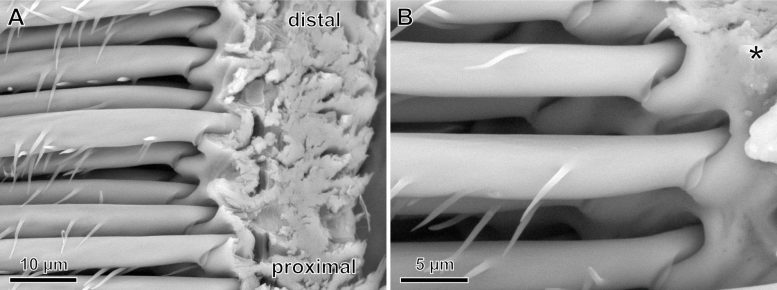
Scanning Electron Microscopy (SEM) image of the bases of pretarsal (ie, on lowest part of leg) adhesive hairs. (A) On the left are the hair shafts of the adhesive hairs closest to the exoskeleton. At their insertion, the hair shaft becomes thinner and a stopper-like structure on the exoskeleton meets and attaches to it. (b) Further magnification of the same region: the asterisk marks the pivot point where hairs can bend upwards. Distal vs. proximal here means away from vs. towards the claw on the tip of the leg. Credit: B Poerschke, SN Gorb and F Schaber
Engineers impressed by the functional great diversity of hairs on spider legs.
Just how do spiders walk straight up — and even upside-down across — so many different types of surfaces? Answering this question could open up new opportunities for creating powerful, yet reversible, bioinspired adhesives. Scientists have been working to better understand spider feet for the past several decades. Now, a new study in Frontiers in Mechanical Engineering is the first to show that the characteristics of the hair-like structures that form the adhesive feet of one species — the wandering spider Cupiennius salei — are more variable than previously thought.
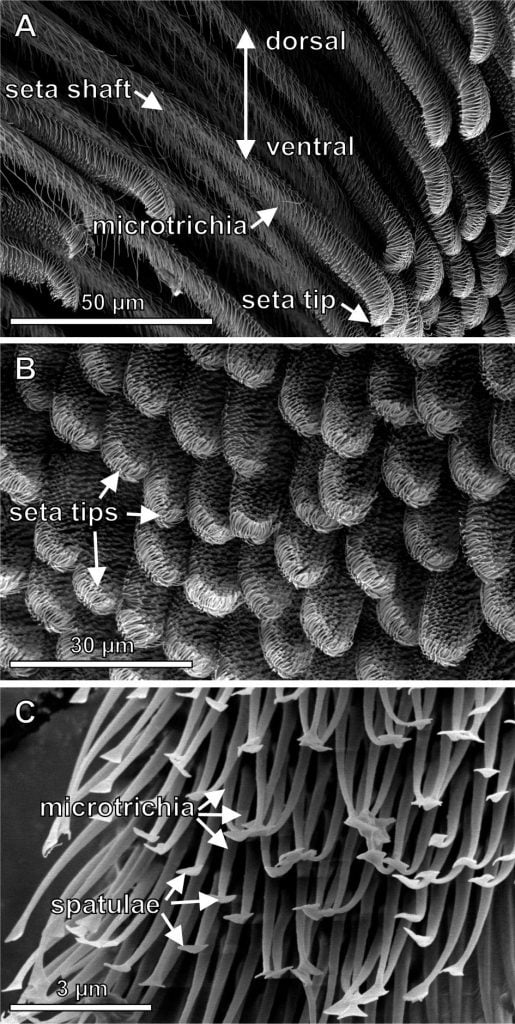
SEM images of the microstructure of the adhesive hairs (‘setae’). (A) Side view showing the up to 1.8 mm long hair shaft (not shown in full length) and the tip region covered with ‘microtrichia’ (minute hair-like structures on the hairs proper). (B) Top view of the ‘scopula pad’ (a dense tuft of hairs) on the lower side of the pretarsus. Covering the tip region of the hairs are spatula-shaped microtrichia, which stick to the substrate during walking. (C) Higher magnification image of the spatula-shaped microtrichia. Credit: B Poerschke, SN Gorb and F Schaber
“When we started the experiments, we expected to find a specific angle of best adhesion and similar adhesive properties for all of the individual attachment hairs,” says the group leader of the study, Dr Clemens Schaber of the University of Kiel in Germany. “But surprisingly, the adhesion forces largely differed between the individual hairs, e.g. one hair adhered best at a low angle with the substrate while the other one performed best close to perpendicular.”
The feet of this species of spider are made up of close to 2,400 tiny hairs or ‘setae’ (one hundredth of one millimeter thick). Schaber, and his colleagues Bastian Poerschke and Stanislav Gorb, collected a sample of these hairs and then measured how well they stuck to a range of rough and smooth surfaces, including glass. They also looked at how well the hairs performed at various contact angles.
Different types of hair work together
Unexpectedly, each hair showed unique adhesive properties. When the team looked at the hairs under a powerful microscope, they also found that each one showed clearly different — and previously unrecognized — structural arrangements. The team believes that this variety may be key to how spiders can climb so many surface types.
This current work studied only a small number of the thousands of hairs on each foot, and it’s beyond the scope of existing resources to consider studying them all. But the team expects that not all of the hairs are unique, and that it might be possible to find clusters or repeating patterns instead.
Bioinspired applications possible
“Although it is still very difficult to fabricate nanostructures like those of the spider — and especially to achieve the stability and reliability of the natural materials — our findings can further optimize existing models for reversible and residue-free artificial adhesives,” says Schaber. “The principle of different shapes and alignments of adhesive contacts as found in the spider attachment system can improve the attachment ability of bioinspired materials to a broad range of substrates with different properties.”
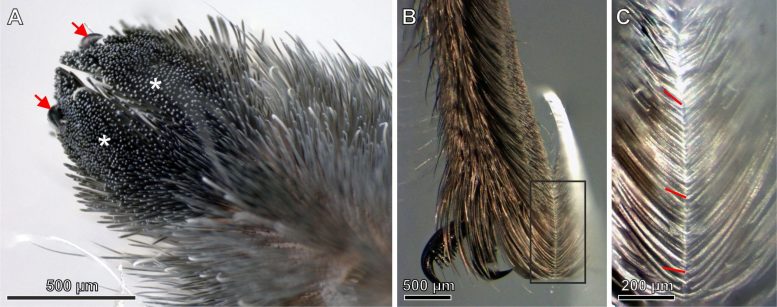
(A) Downward-facing surface of the tuft of hairs around the claws on the pretarsus (white asterisks mark the two lobes of the hair tuft), which consists of thousands of densely packed hairs. Arrows denote the two claws. (B) Side view of the hair tuft on the pretarsus sticking to a glass slide. (C) Magnified view of the rectangle in the second panel. Note how the tips of the hairs have becomes bent. Credit: B Poerschke, SN Gorb and F Schaber
Reference: “Adhesion of Individual Attachment Setae of the Spider Cupiennius salei to Substrates With Different Roughness and Surface Energy” by Bastian Poerschke, Stanislav N. Gorb and Clemens F. Schaber, 11 June 2021, Frontiers in Mechanical Engineering.
DOI: 10.3389/fmech.2021.702297







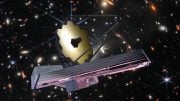
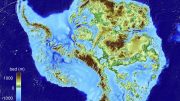
Be the first to comment on "Weird Spider Hair Discovery May Inspire Powerful – Yet Reversible – Adhesives"